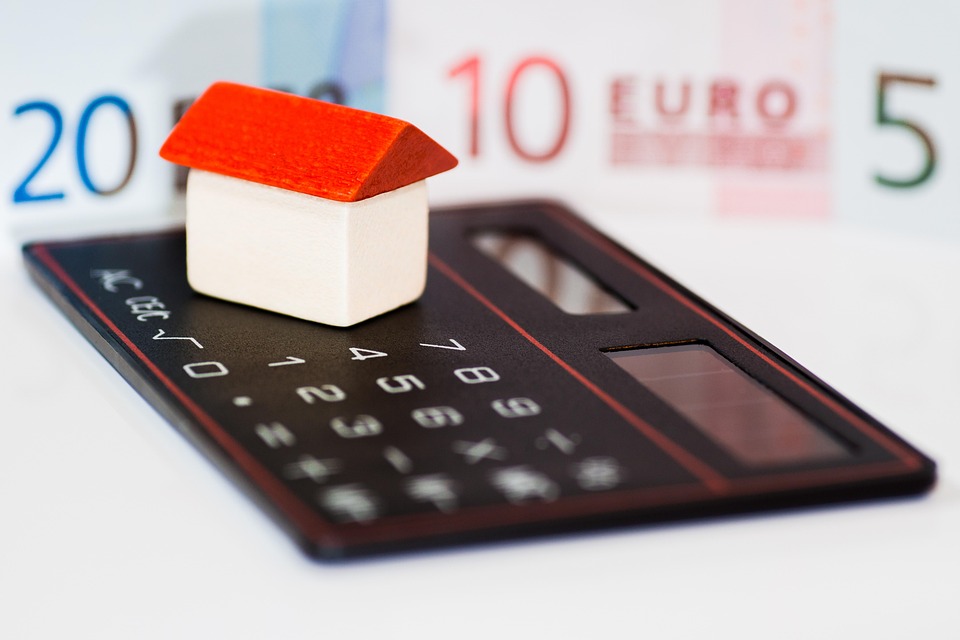
On this Page
On the Same Topic

Building Together: The Rise of Community Mortgages

Understanding Condo Mortgages: What First-Time Buyers Need to Know

Understanding Bank Mortgage Loans: A Comprehensive Guide for Homebuyers
Unlocking Your Home’s Potential: A Guide to Home Project Loans
<h1>Unlocking Your Home’s Potential: A Comprehensive Guide to Home Project Loans</h1>
<p>Homeowners often aspire to create their ideal living spaces. Whether you’re updating an outdated kitchen, expanding with a new room, or turning a backyard into a paradise, home improvement projects can significantly boost both comfort and property value. However, funding these projects can frequently pose challenges. This is where home project loans become essential. In this detailed guide, we will delve into the different types of home project loans, the advantages they provide, and key factors to consider before embarking on your next home improvement venture.</p>
<h2>What You Need to Know About Home Project Loans</h2>
<p>Home project loans are specialized financing options intended to assist homeowners in funding renovations, repairs, and enhancements to their homes. These loans can cover a variety of projects, from simple updates to extensive renovations. They typically come in several forms, including personal loans, home equity loans, and government-backed financing.</p>
<h3>Categories of Home Project Loans</h3>
<p>Familiarizing yourself with the different categories of home project loans is crucial for choosing the right fit for your financial needs and renovation goals.</p>
<h4>1. Personal Loans</h4>
<p>Personal loans are unsecured loans that can be utilized for various purposes, including home improvements. They usually feature fixed interest rates and established repayment terms. Since they’re not backed by collateral, the borrowing amount and interest rate may hinge on your credit score.</p>
<h4>2. Home Equity Loans</h4>
<p>Home equity loans allow you to borrow against the equity accumulated in your home. These loans are secured by your property, which generally means lower interest rates compared to personal loans. Home equity loans provide a lump-sum amount to be repaid over a defined term, making them ideal for significant projects.</p>
<h4>3. Home Equity Lines of Credit (HELOC)</h4>
<p>A HELOC operates similarly to a home equity loan but offers greater flexibility. It works like a credit card, permitting you to withdraw funds as necessary, up to a predetermined limit, thereby financing various stages of your project. HELOCs typically have lower introductory interest rates but may transition into variable rates over time.</p>
<h4>4. Government-Backed Loans</h4>
<p>A number of government-backed loan programs can help finance home improvements. For example, the Federal Housing Administration (FHA) offers 203(k) loans specifically for renovations, enabling homeowners to combine their home purchase and renovation costs into a single mortgage.</p>
<h3>Advantages of Home Project Loans</h3>
<p>Applying for a home project loan can offer multiple benefits, making it an appealing choice for many homeowners.</p>
<h4>1. Enhanced Property Value</h4>
<p>Investing in home improvements can elevate your property’s market value. A well-considered renovation often pays off, making it a smart decision if you plan to sell your home later on.</p>
<h4>2. Personalization of Living Space</h4>
<p>Home project loans provide the funding needed to create a living area that mirrors your style and requirements. Customizing your home not only enhances daily enjoyment but also adds unique features that reflect your personality.</p>
<h4>3. Improved Energy Efficiency</h4>
<p>Many home improvement projects focus on boosting energy efficiency, such as installing energy-efficient windows or upgrading insulation. These enhancements can lead to lower utility bills and improve overall comfort within your home.</p>
<h4>4. Quick Access to Funds</h4>
<p>A home project loan provides the necessary capital to start renovations without the need to amass substantial savings upfront, allowing you to commence projects sooner rather than later.</p>
<h3>Choosing the Right Home Project Loan</h3>
<p>Selecting the appropriate home project loan involves considering various factors, from your credit score to the nature of your planned renovations.</p>
<h4>1. Evaluate Your Credit Score</h4>
<p>Your credit score is crucial in determining the loan amount, interest rates, and terms available to you. Prior to applying for any loan, it’s wise to check your credit score and improve it if needed.</p>
<h4>2. Define Your Budget</h4>
<p>Sketch out the total costs of your project, encompassing materials, labor, and additional fees. A clear budget will aid in estimating how much financing you will need.</p>
<h4>3. Compare Different Lenders</h4>
<p>Avoid settling for the first loan offer that comes your way. Take the time to shop around and compare rates, terms, and fees from multiple lenders to secure the best fit for your situation.</p>
<h4>4. Understand Loan Details</h4>
<p>Ensure you thoroughly read the fine print and understand all loan details, including repayment schedules, interest rates, and any fees for early repayment. Being informed will help prevent any surprises in your financial planning.</p>
<h3>Typical Home Improvement Projects and Associated Costs</h3>
<p>When contemplating a home project loan, it’s vital to have a clear understanding of the types of projects you might want to pursue and their related costs.</p>
<h4>1. Kitchen Renovation</h4>
<p>A kitchen renovation can range from $10,000 for minor updates to over $50,000 for a complete revamp, depending on the project scale and materials chosen.</p>
<h4>2. Bathroom Remodeling</h4>
<p>A bathroom update can cost between $5,000 and $30,000, depending on whether you’re making minor changes or a comprehensive remodel.</p>
<h4>3. Flooring Installation</h4>
<p>Flooring installation costs vary widely, with pricing ranging from $3 to $10 per square foot for laminate, and $10 to $25 for hardwood and tile options.</p>
<h4>4. Exterior Improvements</h4>
<p>Exterior enhancements, such as siding replacements or roofing, can be significant investments, typically costing between $7,500 and $15,000, depending on materials selected.</p>
<h4>5. Landscaping Projects</h4>
<p>Landscaping costs can vary greatly based on the project complexity, ranging from a few hundred dollars for simple plantings to thousands for extensive hardscaping work.</p>
<h2>Navigating the Application Process</h2>
<p>The application process for a home project loan may vary based on the lender and the type of loan you are seeking. However, a typical process includes the following steps:</p>
<h3>1. Pre-Qualification</h3>
<p>Begin by providing basic information about your income, credit history, and the amount you wish to borrow. Lenders will evaluate this information to offer a pre-qualification or pre-approval.</p>
<h3>2. Required Documentation</h3>
<p>Be ready to submit various documents, including proof of income, tax returns, a list of current debts, property details, and project specifics you plan to undertake.</p>
<h3>3. Loan Approval</h3>
<p>After submitting your documentation, the lender will review your application, check your credit report, and evaluate the property’s value, if relevant, before approving your loan.</p>
<h3>4. Finalizing the Loan</h3>
<p>Upon approval, you will move to the closing stage, where you will sign the agreement and finalize the loan terms. Following closing, the funds will be available for your improvement projects.</p>
<h2>Key Considerations Before Obtaining a Home Project Loan</h2>
<p>While home project loans can be an excellent means of financing renovations, several factors should be evaluated prior to committing to a loan.</p>
<h3>1. Affordability</h3>
<p>Make sure you can comfortably handle the monthly payments along with your existing financial responsibilities. Consider potential changes in circumstances to avoid overextending your budget.</p>
<h3>2. Loan Costs and Fees</h3>
<p>Some loans may incur origination fees, appraisal fees, or closing costs. Always inquire about any extra costs associated with the loan to accurately assess its impact on your finances.</p>
<h3>3. Project Planning</h3>
<p>Before applying for a loan, develop a detailed project plan, inclusive of timelines and potential challenges. Such preparation can help you prevent unexpected costs that could disrupt your budget.</p>
<h3>4. Potential Value Increase</h3>
<p>Consider whether the renovations will genuinely increase your home’s value, taking into account the local real estate market and property value trends.</p>
<h3>5. Longevity of Renovations</h3>
<p>Focus on improvements that offer durability and efficiency. Rather than opting for short-term solutions, select upgrades that will endure and minimize the need for further renovations soon after.</p>
<h2>FAQs</h2>
<h3>What is the most suitable type of loan for home improvements?</h3>
<p>The most appropriate loan type depends on your financial situation and project scope. Home equity loans and lines of credit usually offer lower rates but require home equity. Meanwhile, personal loans are more accessible but may feature higher rates.</p>
<h3>Can I use a home project loan for any renovation?</h3>
<p>Yes, most home project loans can be utilized for various renovations such as kitchen updates, bathroom remodels, or adding new spaces. Ensure, however, that the specific loan terms are the right fit for your intended use.</p>
<h3>How do I determine if I have enough equity for a home equity loan?</h3>
<p>To assess your equity, deduct your mortgage balance from your home’s current market value. Lenders generally require a minimum of 20% equity to qualify for a home equity loan.</p>
<h3>Are there government loans available for home renovations?</h3>
<p>Yes, government-backed loans like the FHA 203(k) loan are tailored for home renovations and can provide favorable terms for qualifying borrowers.</p>
<h3>What is the usual timeframe for approval of a home project loan?</h3>
<p>The approval timeline can vary significantly among lenders, typically ranging from a few days to several weeks. Having all necessary documentation prepared can accelerate the process.</p>
<h3>Can I consolidate my debts with a home project loan?</h3>
<p>Yes, by obtaining a home equity loan or a cash-out refinance, you may use the additional funds to pay off existing debts. However, it’s crucial to carefully consider the long-term financial impacts before consolidating.</p>
This HTML document serves as a thorough guide to home project loans, detailing their types, benefits, and important considerations. Additionally, an FAQ section at the conclusion answers common questions related to home projects and financing.